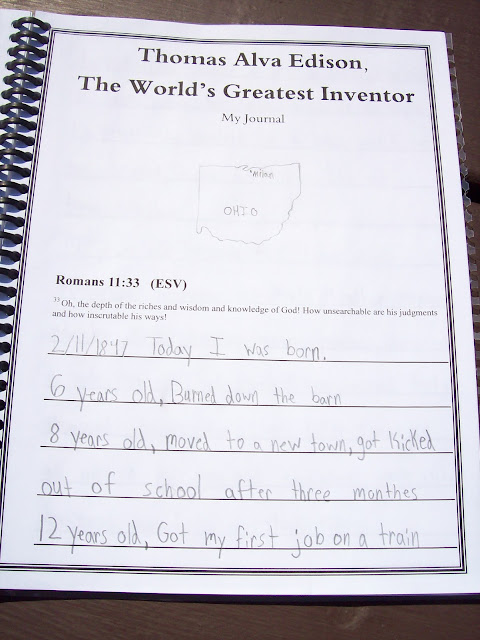After posting
A Matter of Principle, one faithful follower posed some questions regarding Charlotte's statement, "
...not the works of every playwright and novelist are good 'for example of life and instruction in manners.' We are safest with those which have lived long enough to become classics; and this, for two reasons. The fact that they have not been allowed to die proves in itself that the authors have that to say, and a way of saying it, which the world cannot do without. In the next place, the older novels and plays deal with conduct, and conduct is our chief concern in life. Modern works of the kind deal largely with emotions, a less wholesome subject of contemplation."
The reader asked the following,
...I found something you stated to be a worthy thought and something that has been on my mind lately. You pointed this out: Modern works of the kind deal largely with emotions, a less wholesome subject of contemplation (as per Mrs. Mason)....I am curious as to your thoughts about it? What would you consider 'modern' to be? How modern is modern? We were reading a bio of Beethoven and something in there caught my attention that said "He came up with new, thrilling, and expressive ways of putting musical sounds together that changed the history of music forever. Ludwig's music let people FEEL things about the joy, sadness, stress of life. It was something loud and exciting, and often beautiful enough to give your goose bumps all over..." Now, Ludwig was born in 1770. We are talking VERY OLD. Yet, since his composing, the music industry has changed and we are now driven by music that plays very heavy on our emotions. One example, most of his music had a continuous melody through the symphony that was only 4 notes (the shortest). That was the 'tune'. I know some great modern music that only has few notes repeating and repeating itself and is absolutely amazing. But, again, emotional. I often hear in CM circles to choose books that would 'touch the heart'. Oh, they often do. But again, would you consider that to be under 'emotions driven' and most importantly, is that what CM meant? Because if so, what we think to be today's modern stuff, might not even be close to what she meant by it....
I've been pondering the reader's questions because I thought they were great. I decided to put my thoughts in a post, for whatever it's worth.
In order to answer the questions posed, I think we would have
to ask another question. Are a living
book and a classic book the same? It
appears as though Charlotte uses the terms ‘living’ and ‘classic’ differently in her
writing and I wonder if this is where the question lies.
In Charlotte's quote, she refers to books that have become "classics" for two reasons: (1) the fact that they have not been allowed to die proves in itself that the authors have that to say, and a way of saying it, which the world cannot do without; and (2) the older novels and plays deal with conduct, and conduct is our chief concern in life.
According to
Invitation to the Classics, edited byCowan and Guinness, classics exhibit distinguished style, fine artistry, and
keen intellect, as well as creating whole universes of imagination and
thought. They portray life as
multifaceted, depicting both positive and negative aspects of human character.
They have a transforming effect on the reader's self-understanding. They invite and survive frequent
re-readings. They are considered
classics by large numbers of people and their appeal endures over wide reaches
of time. The Classics also often refer to books in the Western Canon, or the body of books, music, and art that have been most influential in shaping Western Civilization. In the above quote, I believe this is what Charlotte is referring to.
On the other hand, living books as defined in blog land and on the Simply
Charlotte Mason website are,
"…books {that}
are usually written by one
person who has a passion for the subject and writes in conversational or
narrative style. The books pull you into the subject and involve your emotions,
so it’s easy to remember the events and facts. Living books make the subject ‘come alive.’
They can be contrasted to dry writing, like what is found in most encyclopedias
or textbooks, which basically lists informational facts in summary form." I believe this may be what the reader was referring to...and I hope she'll correct me if I'm wrong.
In Principle 12, Charlotte refers to
Education being the Science of Relations. In Volume 3, Charlotte says,
I do not mean that he should know all these things; but he should feel, when he reads of it in the newspapers, the thrill which stirred the Cretan peasants when the frescoes in the palace of King Minos were disclosed to the labour of their spades. He should feel the thrill, not from mere contiguity, but because he has with the past the relationship of living pulsing thought; and, if blood be thicker than water, thought is more quickening than blood. He must have a living relationship with the present, its historic movement, its science, literature, art, social needs and aspirations. In fact, he must have a wide outlook, intimate relations all round; and force, virtue, must pass out of him, whether of hand, will, or sympathy, wherever he touches.
We know that Charlotte advocated the use of 'living books' and
the SCM definition would definitely contradict her statement about modern
literature being negative because it deals with emotion if she used the words 'living' and 'classic' interchangeably. However, in reading the original quote in question in its entirety,
Charlotte uses the word “classics” rather than living books. This leads me to believe she means two different things. Charlotte definitely advocated using living books to spark living ideas and this would be the tie to emotion, but I don't believe this is the same as the original reference above.
I personally see a living book as being somewhat more subjective
than a classic. Yes, there are some similarities. However, whether or not the reader makes an
emotional connection with a living book depends on the reader and what
experiences they've encountered prior to their reading. Whereas a classic is considered as such by a
larger group of people and could have been influential in shaping Western Civilization. With that said, I do think a classic can be a living book and a living book can be a classic. But, based on the criteria above, a living book may
not always be considered a classic.
Stay with me here...
When I look up the word "classic" in my new American Dictionary of the English Language by Noah Webster 1828, it says,
(1) An author of the first rank; a writer whose style is pure, correct, and refined; primarily, a Greek or Roman author of this character; but the word is applied to writers of a like character in any nation.
(2) A book written by an author of the first class
Here, we see that relation to Greece and Rome, or the shaping of Western Culture. Now, when I think about a book like
Swallows and Amazons by English author Arthur Ransome, which was published in 1930, seven years after Charlotte published
A Philosophy of Education, I would consider it a living book, which by some, has been deemed a classic. Certainly Ransome would have been Mason's contemporary and considered modern in her time. Does
Swallows and Amazons appeal to emotion rather than conduct or character? I would argue it does not.
This prompts me to think, if Charlotte referred to modern works of
her time as being emotional, I wonder what she would say about modern
literature now, nearly 100 years later.
Obviously, modern to her didn't mean the same as modern to us. And, have some of the works she was referring
to become what we call classics over that time? Since she's not here to ask, it's hard to say.
By the way, I don't know that there is a specific amount of time that must pass in order to make a book a classic. I have read a variety of debates ranging from twenty to fifty and even one hundred years. If we consider books from Greece and Rome, we're talking over 2,000 years. Some living book connoisseur's advise staying away from anything published after the 1950's, particularly regarding children's literature, but again, this is not necessarily related to classics.
Either way, after re-reading Charlotte's original quote several times, I believe her point was to suggest choosing books that deal with conduct, rather than emotion. Ultimately, the decision of which books should be chosen remains to be seen, as the debate of whether a book is classic rages on. As Cowan and Guinness point out,
The body of these masterworks thus shifts and changes constantly in the course of time. Plato, who was passed over in the late medieval world in favor of his disciple Aristotle, became a dominant philosopher in the Renaissance; Thomas Aquinas the learned founder of Scholasticism, has been in modern times largely relegated to seminaries; Francis Bacon has declined to the role of a minor eccentric. Even Shakespeare, now often described as the world's greatest poet, has not always been considered a classic author; the eighteenth century decried his lack of taste and rewrote several of his plays....Virgil's Aeneid seems, regrettably, to be losing some of its position in recent times. But the Iliad and the Odyssey hold their foremost place as firmly as when Plato cited Homer nearly twenty-five hundred years ago, or when, at the turn of the century, most college students read them in Greek.
To place a contemporary writing among the classics, then, is to make a bold conjecture. That conjecture is based on the judgement of a sufficiently large body of readers in current society who consider the work a masterpiece. But the book in question has to be worth their endorsement. All the popular acclaim in the world will not make a classic of mediocre text.
...We could argue that, since the real existence of masterpieces is beyond time, we should not have to wait for time to make its judgment on newcomers. A recently published work might be seen by perceptive readers to take its place among its predecessors and to converse amicably with them. The sensitive reader should be able to judge. (Invitation to the Classics, p. 22)
Some of Charlotte's contemporaries and beyond that Cowan and Guinness include in
Invitation to the Classics are Nathaniel Hawthorne, Emily Dickinson, Herman Melville, Gustave Flaubert, Charles Dickens, George Eliot, Leo Tolstoy, Fyodor Dostoyevsky, Mark Twain, Friedrich Nietzsche, Joseph Conrad, William Butler Yeats, T.S. Eliot, Robert Frost, C.S. Lewis, William Faulkner, Dietrich Bonhoeffer, Flannery O'Connor, and another that I would add that wasn't in their list is Wendell Berry. These authors would be more suited for upper high school and adults.
Authors I would consider worthy for children and young adult would be Louisa May Alcott, C.W. Anderson, Thornton Burgess, Paul Bunyan, Alfred Church, Charles Coffin, Padraic Colum, Alice Dalgleish, James Daugherty, Edgar and Ingri D'Aulaire, Marguerite DeAngeli, Daniel DeFoe, Mary Mapes Dodge, Genevieve Foster, H.A. Guerber, Marguerite Henry, G.A. Henty, V.M. Hillyer, Stewart Holbrook, Holling C. Holling, Clara Ingram Judson, Rudyard Kipling, Jean Lee Latham, George MacDonald, Robert McCloskey, Ralph Moody, Lucy Fitch Perkins, Beatrix Potter, Howard Pyle, Arthur Ransome, Kate Seredy, Rosemary Sutcliff, Opal Wheeler, and Laura Ingalls Wilder. I don't mean to imply that they've all written classics, but I do believe their books are living.
I am still pondering all of this and would love to have further discussion in the comments if anyone is so inclined :))

















































